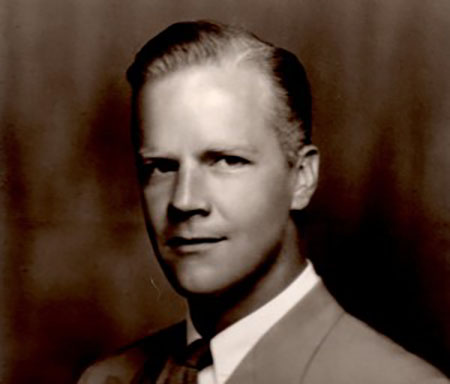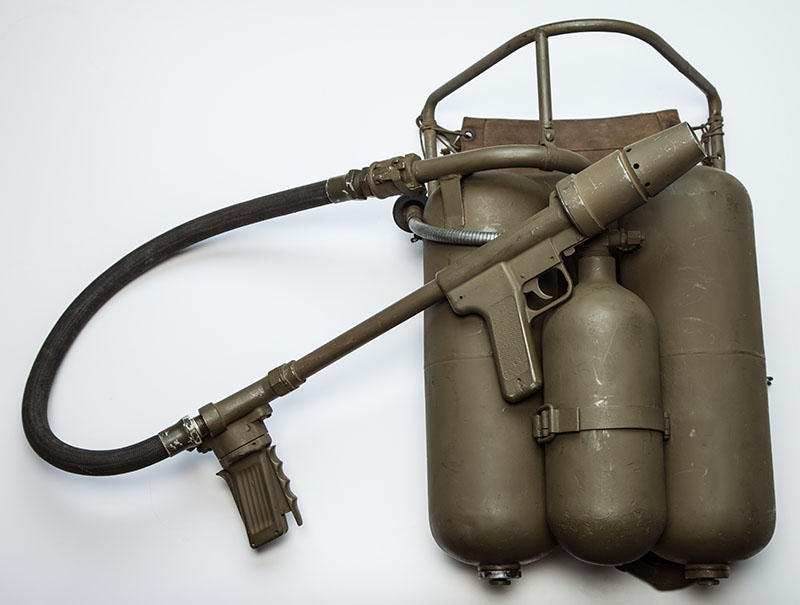-
1st Lieutenant
Alexander Bonnyman Jr.On September 27, 2015, the remains of Alexander Bonnyman Jr. were laid to rest in his hometown of Knoxville, Tennessee, more than 71 years after he died a hero almost 7,000 miles from home. A Medal of Honor and Purple Heart recipient for his bravery during the Battle of Tarawa, Bonnyman was buried in a battlefield cemetery on tiny Betio Island. The impromptu burial ground’s location was lost, however.
-
 Alexander Bonnyman Jr., who died heroically in the Battle of Tarawa in November 1943. Bonnyman “gallantly gave his life for his country,” according to his Medal of Honor citation. Courtesy of Clay Bonnyman Evans.
Alexander Bonnyman Jr., who died heroically in the Battle of Tarawa in November 1943. Bonnyman “gallantly gave his life for his country,” according to his Medal of Honor citation. Courtesy of Clay Bonnyman Evans.Bonnyman’s Knoxville grave marker read “buried at sea” for decades until History Flight, a nonprofit dedicated to repatriating America’s war dead, discovered the cemetery and recovered the remains of Bonnyman and many more heroes who fell on Betio. Clay Bonnyman Evans—Bonnyman’s grandson—participated in the excavations, and will speak about the experience May 30, 2016, as part of The National WWII Museum’s Memorial Day commemoration.
-
Alexander Bonnyman’s prewar life was spent in the mining business. Following in his father’s footsteps, he joined the family business at age 22 after a short stint in the Army Air Corps. By 28, Bonnyman acquired his own copper mine in the mountains of New Mexico. His time with the military, however, was not done.
Bonnyman enlisted in the Marines in 1942, and soon set sail for the South Pacific on the USS Matsonia as a member of the 6th Marines, 2nd Marine Division. He quickly rose in rank, from private to 2nd lieutenant to 1st lieutenant, in little more than a year. -
 Fifth Marine Division riflemen surround a dugout on Iwo Jima, ready to use a flamethrower to pour covering fire into the opening. The flamethrower was a basic weapon in the cave-to-cave battle on the volcanic rock.The National WWII Museum, 2011.102.557.
Fifth Marine Division riflemen surround a dugout on Iwo Jima, ready to use a flamethrower to pour covering fire into the opening. The flamethrower was a basic weapon in the cave-to-cave battle on the volcanic rock.The National WWII Museum, 2011.102.557. -
Bonnyman landed on Tarawa—which was occupied by Japanese forces—with the 8th Marines, 2nd Battalion, on November 20, 1943. During the US invasion, Bonnyman acted “on his own initiative when assault troops were pinned down at the far end of Betio Pier by the overwhelming fire of Japanese shore batteries” and “repeatedly defied the blasting fury of the enemy bombardment to organize and lead the besieged men,” according to his Medal of Honor citation. Bonnyman led a group of men on a fearless attack upon heavily guarded Japanese installations. He was relentless, according to the citation, only halting advances to reload on ammunition. After successfully gaining strategic ground on a Japanese bunker, Bonnyman died holding his position against heavy Japanese fire.
-
 This flamethrower, currently on display in Road to Tokyo, is much like the one Bonnyman used during fierce fighting on Tarawa. The National WWII Museum, 2001.063.001.
This flamethrower, currently on display in Road to Tokyo, is much like the one Bonnyman used during fierce fighting on Tarawa. The National WWII Museum, 2001.063.001. -
His leadership, fervor, and aggressive tactics spurred his men to keep what he gave his life to take, successfully repelling a Japanese counterattack. Bonnyman “gallantly gave his life for his country,” said his Medal of Honor citation.
This Memorial Day, Honor 1st Lieutenant Alexander Bonnyman Jr.
-
Share on Facebook
-
Tweet Your Thanks
Tweet -
Explore More Stories
From Our Collection
